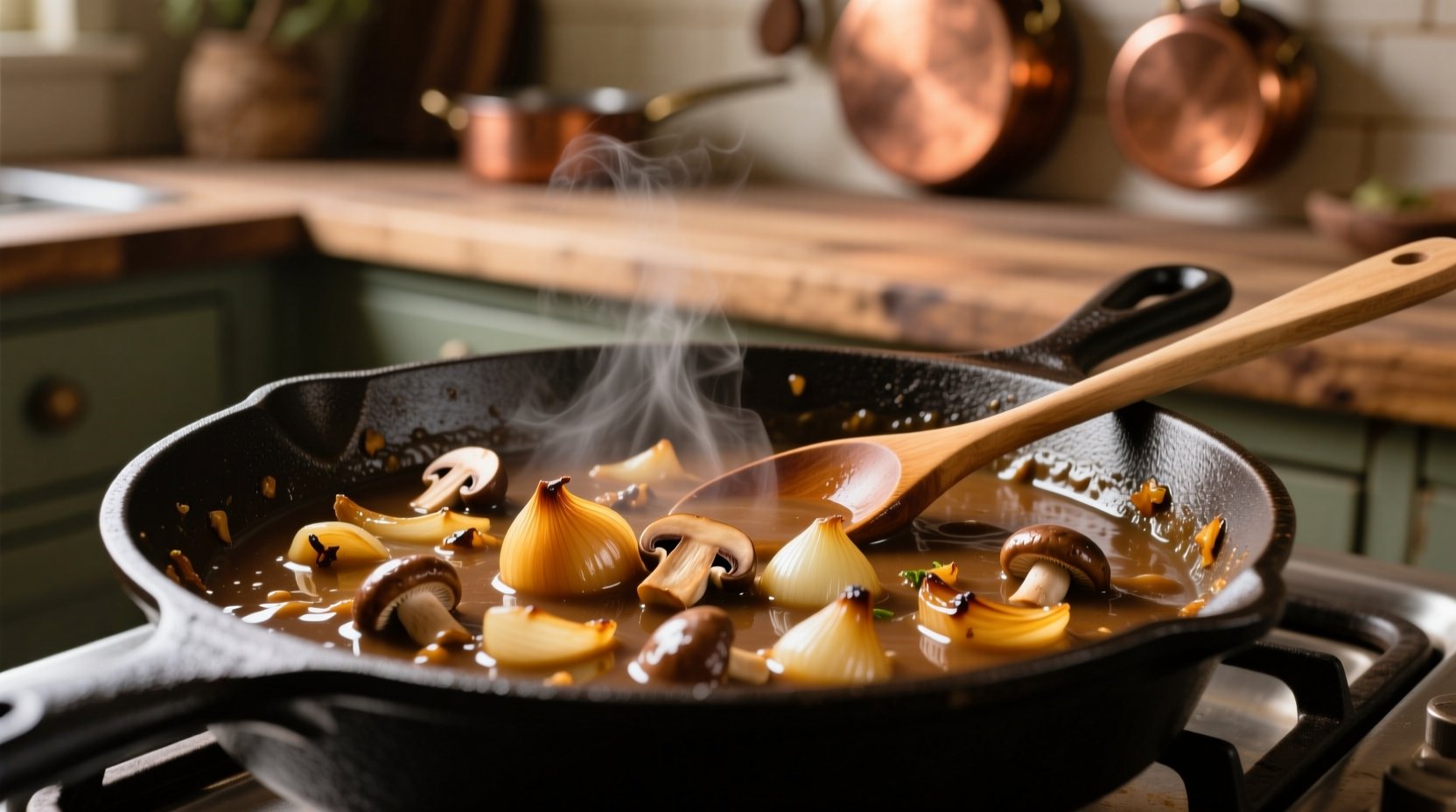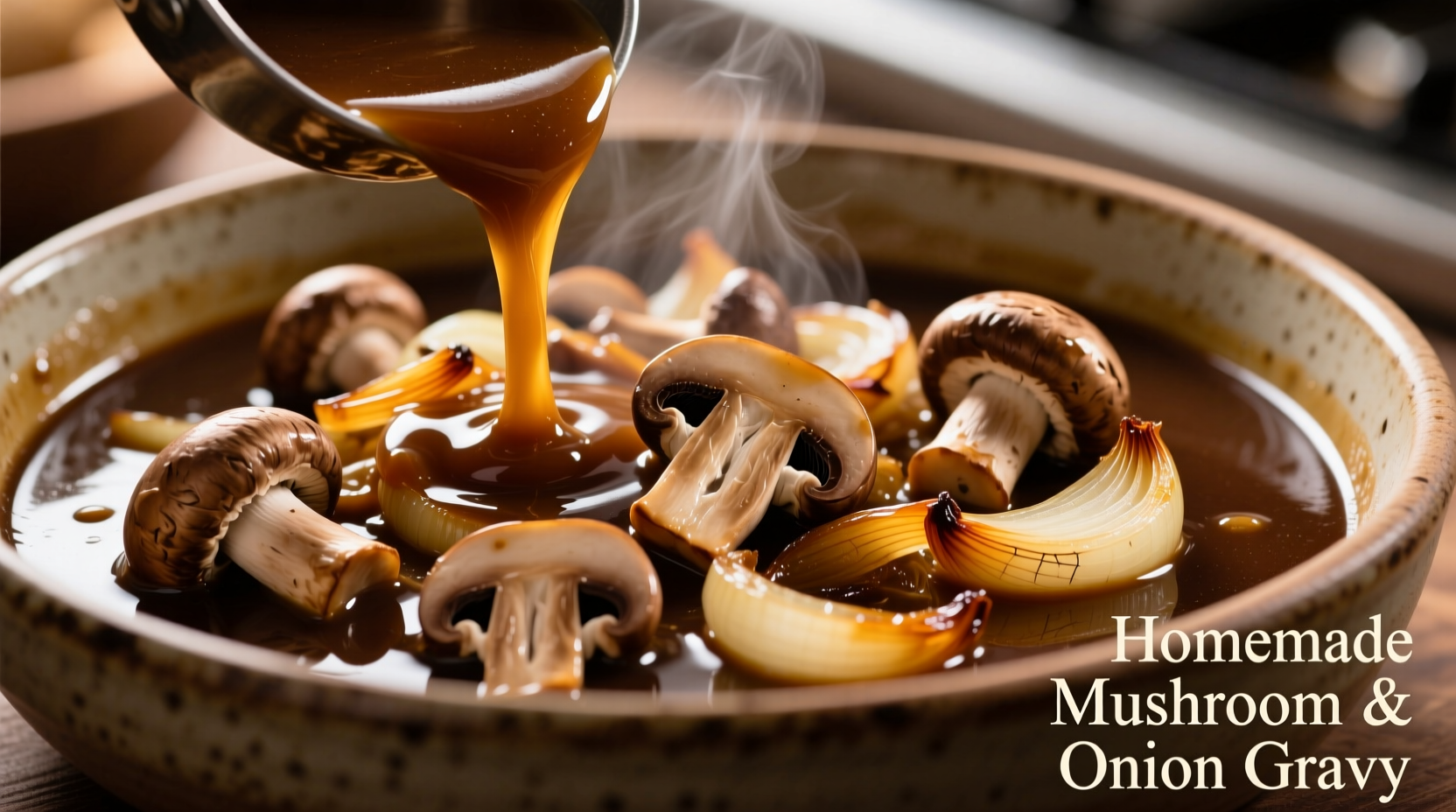
The Essential Guide to Perfect Mushroom and Onion Gravy
Creating exceptional mushroom and onion gravy transforms ordinary meals into memorable dining experiences. Unlike store-bought versions, homemade gravy offers complex umami depth from properly caramelized mushrooms and onions, balanced with aromatic herbs. This guide reveals professional techniques that ensure smooth texture and rich flavor every time you cook.
Why This Recipe Works
The magic happens through three critical stages: proper mushroom preparation, controlled onion caramelization, and precise roux technique. Mushrooms release water when cooked, which many home cooks mistakenly try to rush. Patience here creates concentrated flavor. Similarly, onions need 20-25 minutes to develop their natural sugars without burning. The roux—equal parts fat and flour—must cook long enough to eliminate raw flour taste while maintaining thickening power.
| Thickening Method | Texture Result | Flavor Impact | Best For |
|---|---|---|---|
| Roux (cooked 5+ minutes) | Silky smooth | Nutty, complex | Traditional gravies |
| Cornstarch slurry | Glossy, slightly sticky | Neutral | Gluten-free needs |
| Reduction only | Naturally thick | Intense mushroom flavor | Low-carb diets |
Ingredients for Exceptional Flavor
Quality ingredients make the difference between good and extraordinary mushroom gravy. Choose cremini mushrooms for their earthy depth—they contain 10 times more glutamates than white button mushrooms according to USDA research. Yellow onions provide the ideal sugar content for caramelization without excessive sharpness. For the richest flavor profile, use a combination of butter and bacon fat (if not vegetarian).
Step-by-Step Preparation
Preparing the Mushrooms
Slice 1 pound cremini mushrooms to 1/4-inch thickness. Heat 2 tablespoons oil in a cast-iron skillet over medium-high heat. Add mushrooms in a single layer without crowding—this prevents steaming. Cook undisturbed for 4 minutes until golden brown on one side, then stir and continue cooking 8-10 minutes until all liquid evaporates and mushrooms develop deep brown color. Remove and set aside.
Caramelizing the Onions
Reduce heat to medium. Add 1 tablespoon butter to the same skillet. Add 2 thinly sliced yellow onions with pinch of salt. Cook slowly for 20-25 minutes, stirring occasionally, until onions become deep golden brown. The salt draws out moisture while preventing burning. Properly caramelized onions should have a jam-like consistency.
Building the Roux
Return mushrooms to the skillet with onions. Add 3 tablespoons butter and let melt. Sprinkle 3 tablespoons all-purpose flour over mixture while stirring constantly. Cook for 5 minutes, stirring continuously, until raw flour smell disappears and roux turns light golden brown. This extended cooking develops nutty flavor while maintaining thickening power.
Creating the Perfect Consistency
Gradually whisk in 2 cups warm vegetable broth, ensuring no lumps form. Add 1 tablespoon soy sauce for umami depth and 1 teaspoon fresh thyme. Simmer gently for 8-10 minutes until gravy coats the back of a spoon. Season with freshly ground black pepper—avoid salt until final tasting as soy sauce and broth contain sodium.
Troubleshooting Common Issues
Grainy texture: This happens when flour isn't fully incorporated. Solution: Strain through fine mesh sieve while hot, then return to heat.
Too thin: Make a beurre manié (equal parts softened butter and flour) and whisk in small pieces until desired thickness.
Bland flavor: Boost with 1/2 teaspoon mushroom powder or 1 tablespoon dry sherry added at the end.
When to Use This Gravy
Mushroom and onion gravy shines with specific dishes but doesn't work universally. It's ideal for:
- Comfort food classics like mashed potatoes and meatloaf
- Vegan and vegetarian dishes needing umami depth
- Thanksgiving and holiday meals
Avoid pairing with delicate fish or light chicken dishes where its robust flavor would overwhelm. The gravy's earthy profile complements hearty meats but clashes with subtle flavors.
Historical Context of Mushroom Gravy
Mushroom gravy evolved from medieval European meat sauces. Before refrigeration, cooks preserved mushrooms by drying them, then reconstituting in sauces. The 19th century saw mushroom ketchup become popular in British cooking, documented in Isabella Beeton's Book of Household Management (1861). American home economists later adapted these techniques during World War II when meat was rationed, creating vegetarian gravy alternatives that gained permanent popularity.
Serving Suggestions and Storage
For best results, serve mushroom and onion gravy immediately after preparation. It thickens as it cools, so keep a small amount of warm broth nearby to adjust consistency. Leftovers store well for 3-4 days in airtight containers. When reheating, do so gently over low heat while whisking in liquid as needed. Freezing is not recommended as the texture becomes grainy upon thawing.











 浙公网安备
33010002000092号
浙公网安备
33010002000092号 浙B2-20120091-4
浙B2-20120091-4